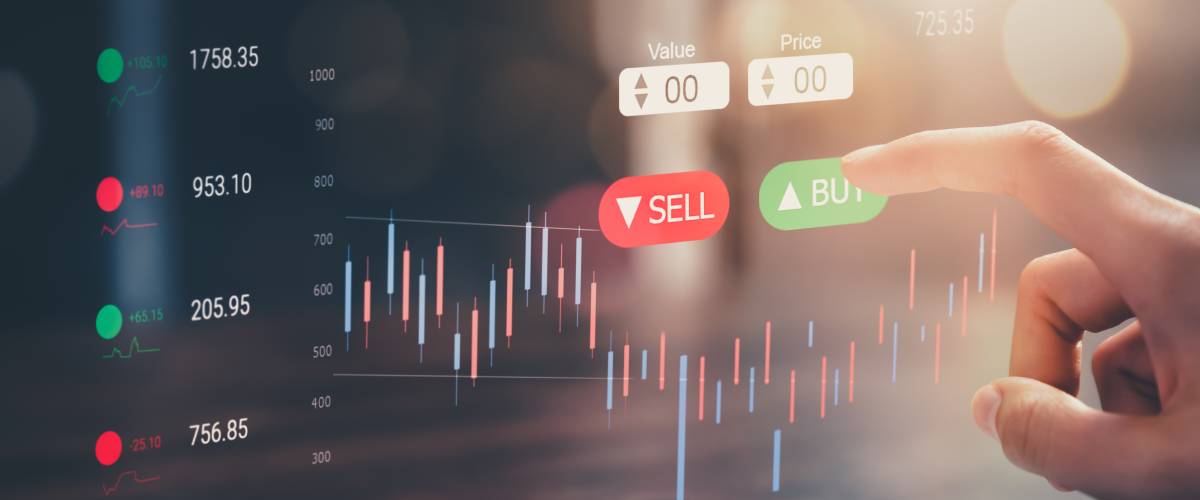What is Intraday Equity Trading?
Intraday equity trading, also known as day trading, refers to the practice of buying and selling financial instruments, particularly stocks, within the same trading day. In this approach, traders aim to take advantage of short-term price movements in the market and capitalize on potential profits. There are many intraday equity trading tips providers in the market for professional guidance.
Intraday traders execute multiple trades throughout the day, closing all their positions by the end of the trading session. They do not hold stocks overnight, as their primary goal is to benefit from the price volatility within a single trading day.
To engage in intraday equity trading, traders use various strategies and techniques, including technical analysis, chart patterns, indicators, and market news. They closely monitor stock prices, trading volumes, and market trends to make quick decisions on buying and selling stocks.
Intraday trading typically requires active participation, constant monitoring of the market, and a good understanding of trading techniques and risk management. It can be a high-risk strategy due to the short timeframes involved and the potential for rapid price fluctuations. Traders often use stop-loss orders and profit targets to manage their risks and protect their capital.
It’s important to note that intraday equity trading requires careful consideration of market conditions, sufficient knowledge, and experience. It may not be suitable for all investors, and individuals should carefully assess their risk tolerance and financial goals before engaging in this type of trading.
Advantages of Intraday Trading
- Intraday trading offers flexibility as traders can enter and exit positions within the same day.
- Reduces the risk of exposure to unforeseen events that could impact the market negatively.
- Intraday trading often involves the use of leverage, which allows traders to control a larger position with a smaller amount of capital.
- Intraday trading appeals to individuals who enjoy active participation in the market.
- Intraday trading can provide the opportunity for daily income, as traders aim to generate profits regularly.
- The intraday trading environment typically involves highly liquid markets, allowing traders to easily enter and exit positions.
- Intraday traders can employ various strategies to capitalize on short-term price movements, such as scalping, momentum trading, or mean reversion.
- By closing positions before the end of the trading day, intraday traders avoid exposure to overnight market risks, such as surprise news events or market gaps.
- Traders can develop a deep understanding of market dynamics, technical indicators, and risk management techniques, which can be valuable for future trading endeavors
Risk Management Techniques
Intraday trading in the equity markets can be an exciting and potentially profitable endeavor. However, it also carries significant risks due to the volatile nature of the stock market. To navigate these risks successfully, intraday equity traders need to implement effective risk management techniques. In this article, we will explore some essential strategies that can help traders mitigate risks and increase their chances of success in intraday trading.
1. Define Your Risk Tolerance
Before diving into intraday trading, it is crucial to determine your risk tolerance level. Risk tolerance refers to the amount of risk you are willing and able to withstand without experiencing significant emotional or financial distress. Understanding your risk tolerance will help you establish appropriate risk management measures and avoid taking on excessive risks that could harm your trading capital.
2. Set Stop Loss Orders
One of the most fundamental risk management techniques for intraday traders is to use stop-loss orders. A stop-loss order is an instruction to sell a security when it reaches a certain price level, limiting the trader’s potential loss. By setting stop-loss orders, traders can protect their capital and prevent substantial losses in case the market moves against their positions. It is important to set stop loss levels based on careful analysis and consideration of market conditions, support, and resistance levels, and individual stock volatility.
3. Implement Position Sizing Strategies
Position sizing is a critical aspect of risk management in intraday trading. It involves determining the appropriate amount of capital to allocate to each trade based on the trader’s risk tolerance and the potential risk/reward ratio of the trade. By using position sizing techniques such as fixed fractional position sizing or percentage-based position sizing, traders can ensure that they are not putting too much capital at risk on any single trade. This helps to protect against catastrophic losses and maintain a sustainable trading approach.
4. Diversify Your Portfolio
Diversification is a risk management technique that involves spreading investments across different securities or sectors. By diversifying your intraday equity portfolio, you can reduce the impact of any single stock or sector on your overall trading performance. If one stock or sector experiences adverse price movements, the potential losses can be offset by gains in other stocks or sectors. Diversification helps to lower the risk of concentrated exposure and provides a more balanced risk-reward profile.
5. Utilize Technical Analysis Tools
Technical analysis is a widely used approach in intraday trading that involves analyzing historical price and volume data to identify patterns and trends. By utilizing technical analysis tools such as moving averages, trendlines, and oscillators, traders can make more informed decisions and manage risks effectively. These tools help traders identify entry and exit points, support and resistance levels, and potential price targets, which can assist in setting appropriate stop-loss levels and profit targets.
6. Stay Informed and Stay Disciplined
Intraday equity traders should stay informed about market news, economic releases, and company-specific developments that can impact stock prices. Having access to real-time information can help traders make better-informed decisions and manage risks proactively. Additionally, traders need to maintain discipline in following their trading plans and risk management strategies. Emotional decision-making and impulsive trading can lead to significant losses. By adhering to a well-defined trading strategy and risk management framework, traders can minimize the impact of emotions on their trading decisions.
7. Regularly Review and Adjust Your Trading Plan
Successful risk management requires continuous evaluation and adjustment of your trading plan. The market conditions and dynamics can change over time, requiring traders to adapt their strategies accordingly. Regularly reviewing your trading plan and performance can help identify areas for improvement and refine your risk management techniques. By learning from past mistakes and staying adaptable, traders can increase their chances of long-term success in intraday equity trading.
Conclusion
In conclusion, effective risk management techniques are crucial for intraday equity traders to navigate the volatile and fast-paced nature of the financial markets. By implementing sound risk management strategies, traders can protect their capital, minimize potential losses, and increase their chances of long-term success.
Moreover, staying informed about market news, economic indicators, and company-specific developments is crucial for intraday equity traders. Timely information enables traders to make informed decisions and avoid unnecessary risks associated with unexpected events. Additionally, employing technical analysis and risk-reward assessments can provide valuable insights into potential entry and exit points, further enhancing risk management capabilities.










